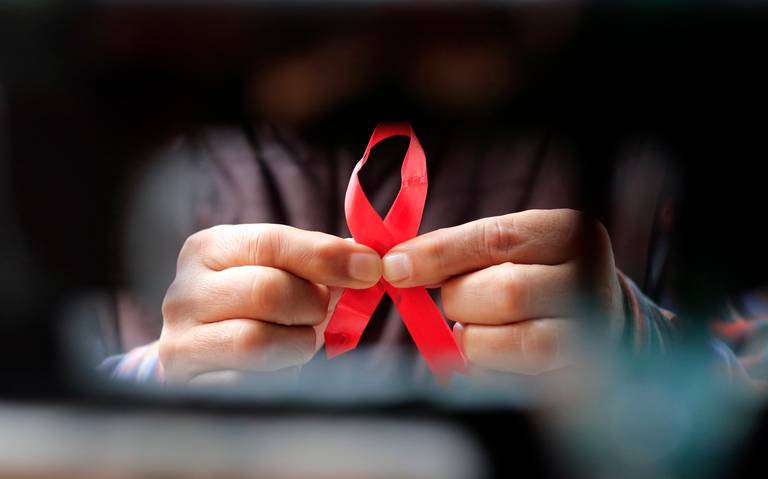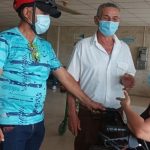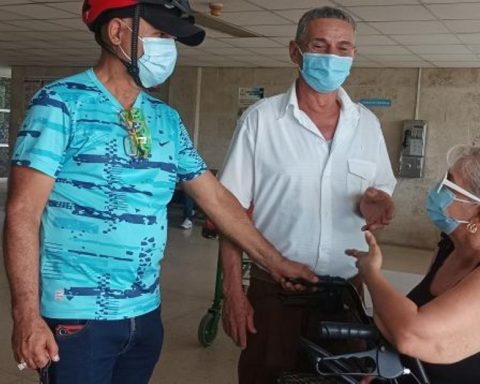The Human Immunodeficiency Virus (HIV), responsible for the Acquired Immune Deficiency Syndrome (AIDS), is a mutation of the Simic Immunodeficiency Virus. The latter comes from of a type of chimpanzee typical of Central Africa. It probably passed to humans after contact (via consumption of the animal’s meat, for example) with infected blood. It was as far back as the end of the 19th century.
Then HIV spread to Africa and other continents. On June 5, 1981, the Center for Disease Control and Prevention (CDC) in Atlanta, United States, in its weekly epidemiological bulletin reported that: “In the period from October 1980 to May 1981, five young men, all active homosexuals, have been treated for biopsy-confirmed ‘Pneumocystis carinii’ pneumonia at 3 different hospitals in Los Angeles, California. Two of the patients have died…”.
Although no one could have foreseen it then, they were the first known human beings to suffer from AIDS. That document would acquire historical value.
Brief timeline of the epidemic
One year after the first cases were reported it defined itself the Acquired Immunodeficiency Syndrome (AIDS) and the modes of transmission were specified: blood, sexual intercourse and mother-child.
In 1983 the causative agent was identified and two years later the US Food and Drug Administration (FDA) authorized the first HIV antibody test. By then cases had been identified on all continents.
Six years after the famous report of June 1981, the use of the first drug against the disease was authorized: azidothymidine (AZT). And in 1991 the second antiretroviral drug was tested: didanoside (DDI).
This opened the doors for the application of combined treatments to be evaluated two years later. This greatly lengthened the life expectancy of the sick.
What is AIDS and how does HIV act in our body?
Although it is known, it is not idle to remember some general concepts about the virus and how it acts in our body. The first thing is that he AIDS It is the most advanced stage of HIV infection.
In the absence of treatment and depending on the person, it can take years to manifest itself. However, once symptoms begin, people with AIDS may be more prone to certain cancers and infections or other serious clinical manifestations because of their immunological vulnerability.
How and why does this happen? because the virus destroy CD4 lymphocytes. This type of white blood cell plays an important role in protecting the body against infection.
Additionally, HIV uses the mechanisms of these cells to reproduce and spread throughout the body. The process, which is carried out in seven steps or stages, is called “the HIV life cycle”.
The latter is very important, because HIV drugs block the action of the virus at different times in its life cycle. In a generic way, these drugs are known as antiretrovirals and the treatment that includes them, as antiretroviral treatment (ART).
People on ART receive a combination of drugs. The different schemes include at least two different classes of drugs. In this way, greater effectiveness is guaranteed and the virus is prevented from adapting, protecting the immune system and preventing AIDS from developing in the patient’s body.
What is the current situation of the AIDS epidemic?
According to the UN, until December 2021, approximately 84.2 million people they had contracted HIV infection. Of those, 40.1 million have died of secondary diseases associated with AIDS.
Today there are about 38.4 million people infected. And during 2021, about 1.5 million new cases were recorded, while the number of deaths was around 650,000 people. The epidemic remains a major global health problem.
Of the people living with the virus in the world, approximately 1.7 million are children up to 14 years of age. 54% are females (women and girls), which contrasts with what happened in the early years of the epidemic, when most of the reported infected were men.
After peaking in 1996, new HIV infections have fallen by 54%. Meanwhile, since 2010 the number of new children infected with HIV has decreased by 52%.
Regarding deaths, the highest number of reported deaths from the disease occurred in 2004, with 2 million. The number of annual deaths has been reduced by 68%.
Finally, new infections are concentrated in the so-called key population groups. These are: sex workers and their clients, men who have sex with men (MSM), people who inject drugs, transgender people and their sexual partners.
These groups accounted for 70% of new HIV infections globally. That implies 94% of new HIV infections outside of sub-Saharan Africa and 51% of new HIV infections in sub-Saharan Africa.
In these groups the risk of contracting the virus is greatly increased compared to others. In the case of sex work, the risk of infection is 38 times higher; 29 times among those who inject drugs; 28 times more among MSM and 22 times for transgender women.
95-95-95
In December 2020 UNAIDS (Joint United Nations Program on HIV/AIDS) set an ambitious goal for 2025 called Program 95-95-95. It consists in that by the year 2025 95% of people living with the virus know their condition.
Also, that 95% of those diagnosed receive antiretroviral treatment on a sustained basis. And finally, that 95% of people on ART have “sustained viral suppression” (The presence of values of the virus in the blood that make it undetectable. It does not mean that it is not there, but simply that it cannot be detected).
At what point are we currently? As of December 2021, 85% of people living with HIV knew their HIV status, 75% had access to treatment and 68% had an undetectable viral load.
There is much to do.
situation in Cuba
According to him Health Statistics Yearbook 2022, in the years 2020 and 2021, AIDS was one of the first 35 causes of death in Cuba. In those years, 307 and 320 men respectively died from this cause. It was the 22nd cause of death among males in the country.1.
Among women the number of deaths was lower, with 62 and 78 deaths respectively, with the cause of death numbering 28 in order of importance. In general, in those two years, 369 and 398 people, respectively, died of AIDS-related illnesses.
On the other hand, the reporting of new cases has decreased. In 2010, 764 cases of people infected with the virus were diagnosed. The number fell to 243 in 2020, always with a marked predominance of males.
Pandemic, crisis and fight against AIDS
In the last three years, the shock of the COVID-19 pandemic, coupled with the global economic and humanitarian crises, have threatened the global response to HIV. COVID-19 caused global chaos in health services. 60% of the poorest countries in the world are in external debt or are at high risk of contracting it. Furthermore, it is estimated that between 75 and 95 million people have been pushed into poverty.
As a result, the health response to AIDS is under pressure, and communities already most at risk are now even more vulnerable. The latest data compiled by UNAIDS shows that while new HIV infections declined globally last year, the drop was only 3.6% compared to 2020, the smallest annual reduction since 2016.
Will AIDS be cured?
Today it counts with safer, more effective and comfortable treatments. Not only are they able to keep people alive, but they prevent the disease from being transmitted and reduce the social effects of the stigma of being “HIV-positive”.
Additionally, last year the first long-acting treatment was approved. In this way, patients could keep the virus under control with just one injection every two months.
However, if the above is encouraging, the real revolution is in the prevention of the disease. The use of the drug PrEP (Pre-exposure Prophylaxis) reduces the risk of getting sick through sexual intercourse by 90% and by 70% after a needle stick. Since 2019 in Cuba has been carried out a pilot experience with this drug that has spread to various regions of the country.
In addition, important steps are taken in the investigation of vaccines with messenger RNA, which was used successfully against COVID-19, for the prevention of HIV.
Finally, recently the magazine Nature reported the third case of a person cured of HIV. This is a patient who, after being diagnosed as positive for the virus, suffered a type of leukemia (blood cancer). After several treatment schemes, it was decided to perform a bone marrow transplant.
A donor was sought who, in addition to being a match, presented the CCR5Δ32 mutation. Approximately 1% of people have this condition in which a protein essential for the entry of the virus into cells is not expressed. The individual, known as the “Düsseldorf Patient” has been without ART for four years and without traces of the virus.
Much progress has been made in understanding and combating the disease in the last forty years. In fact, we are at a point that seemed unthinkable. But much remains to be done, especially making access to diagnosis and treatment more equitable among the most vulnerable on the geopolitical map.
1 In the yearbook, the cause of death is only referred to as AIDS. This is very convenient for statistical purposes, but it actually encompasses statistical categories that include twenty infections, some cancers, specific diseases related to the virus and the syndrome and its complications in the body. So, the most correct category would be: “infectious diseases or not, related to HIV and AIDS”.
















